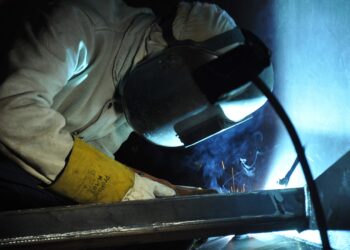The Western Balkans region, comprising Albania, Bosnia and Herzegovina, Kosovo, North Macedonia, Montenegro, and Serbia, is characterized by significant geographical, economic, and political diversity. Energy plays a key role in maintaining economic and social stability here, and its structure is the result of historical conditions, the availability of local resources, and the pace of integration with the European Union. The OECD emphasizes that the region needs a thorough reform of subsidies and energy prices to achieve a just and green transition.
The current energy mix in individual countries highlights the scale of contrasts. Albania is a unique case – almost 100% of its electricity is produced from hydropower plants, placing it alongside Paraguay at the top of the global ranking. In recent years, however, it has begun diversifying its sources – in 2023, the 140 MW Karavasta solar park was launched, and an auction awarded 222 MW of wind power capacity. Additionally, construction of a 400 kV interconnector with North Macedonia is underway, which will enhance regional energy integration.
Kosovo, on the other hand, is almost entirely dependent on lignite, which accounts for 95% of electricity production, with only 3% coming from hydropower and photovoltaics. Two wind farms – Bajgora and Kitka – operate there, with a combined capacity of 135 MW, but their share in the mix is symbolic. In Serbia, coal accounts for about two-thirds of electricity generation, with the remainder coming from oil, gas, and renewables – mainly bioenergy and hydropower. The country plans to add 600 MW of wind capacity by 2030.
Bosnia and Herzegovina relies largely on lignite and hydropower, and its 2030 strategy envisions reducing coal’s share and achieving a 43.6% share of renewables. In North Macedonia, about half of electricity comes from coal, the rest from renewables and imports, with the government pledging to phase out coal by 2030. Montenegro combines coal power with hydropower, has the Krnovo and Možura wind farms, and plans to build a large solar park in Ulcinj. Its targets include reaching 100% renewable electricity by 2030 and climate neutrality by 2050.
Across the region, coal still holds a very high share: 95% in Kosovo, 67% in Serbia, 65% in Bosnia, 51% in North Macedonia, and 41% in Montenegro. Only Albania does not use coal for power generation. Despite the growing importance of renewables, financial support in the region has so far favored fossil fuels – between 2018 and 2023, the Western Balkan states allocated €5.8 billion in subsidies to the energy sector, with over 71% going to coal, oil, and gas. Additionally, subsidizing consumer energy prices cost around €19.1 billion.
Dependence on coal results not only in high CO₂ emissions but also in dire air quality. Belgrade and Sarajevo regularly rank among the most polluted cities in the world, and mortality rates linked to air pollution are several times higher than in Western Europe – in Bosnia they reach 114 per 100,000 inhabitants, in Serbia and Montenegro about 100, compared to 45 in Germany and 29 in France.
However, recent years have seen a rise in investments in green energy. The region’s renewable potential is enormous – it is estimated at up to 94.4 GW of wind and solar capacity. Currently, wind and solar account for only about 7% of the mix, showing the scale of untapped opportunities. Several countries are also developing hydrogen as a clean fuel. Albania has large natural hydrogen reserves, Serbia plans a €2 billion investment to produce 30,000 tons of hydrogen annually by 2028, Croatia aims for 70 MW of hydrogen capacity by 2030 and 2,750 MW by 2050, and North Macedonia is building a gas pipeline to Greece with future hydrogen transport in mind.
The energy transition, however, requires massive investment – for example, Bosnia and Herzegovina needs around $6.8 billion to modernize the sector and move away from coal. Support is provided by the European Union, the World Bank, and other international institutions, which fund both renewable projects and just transition programs designed to help mining communities.
The future of the Balkans’ energy mix will depend on the pace of reforms and the availability of funds. Three scenarios are possible: a conservative one – maintaining a high share of coal and slow renewable development; a modernization scenario – rapid expansion of renewables with EU support and coal mine closures; and an advanced one – incorporating hydrogen, energy storage, and gas as a transitional fuel.
The region now faces a choice – whether to stick to a model of high dependence on cheap but dirty energy sources, or to seize the opportunity offered by European funds to become an area of innovative, clean energy. In light of climate, health, and geopolitical challenges, the latter path appears to be the only one that can provide the Balkans with a safe and stable future.






